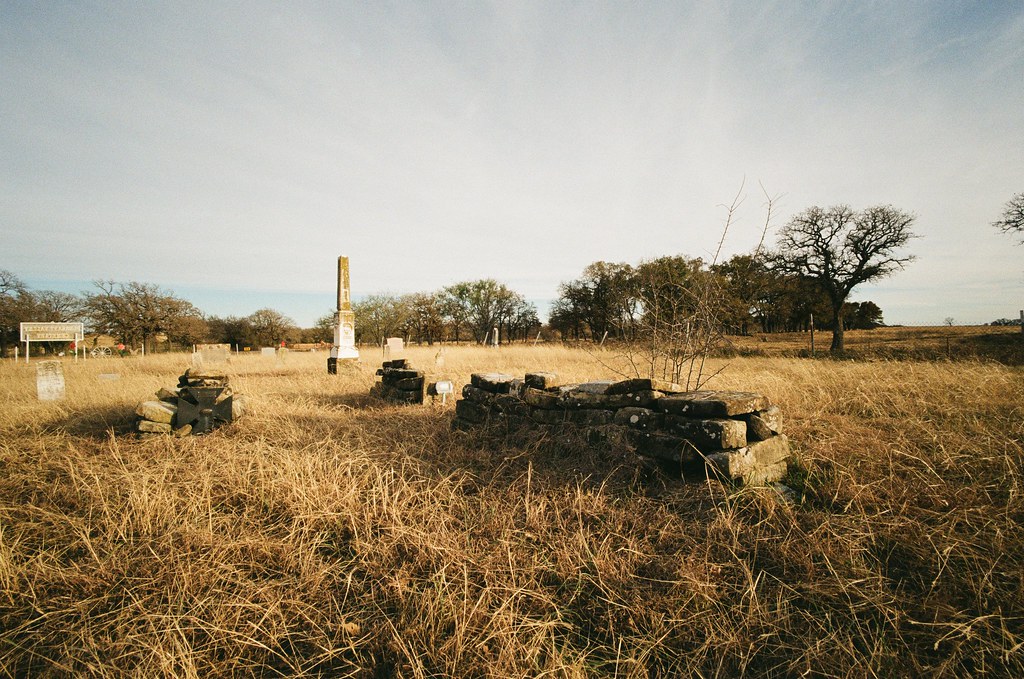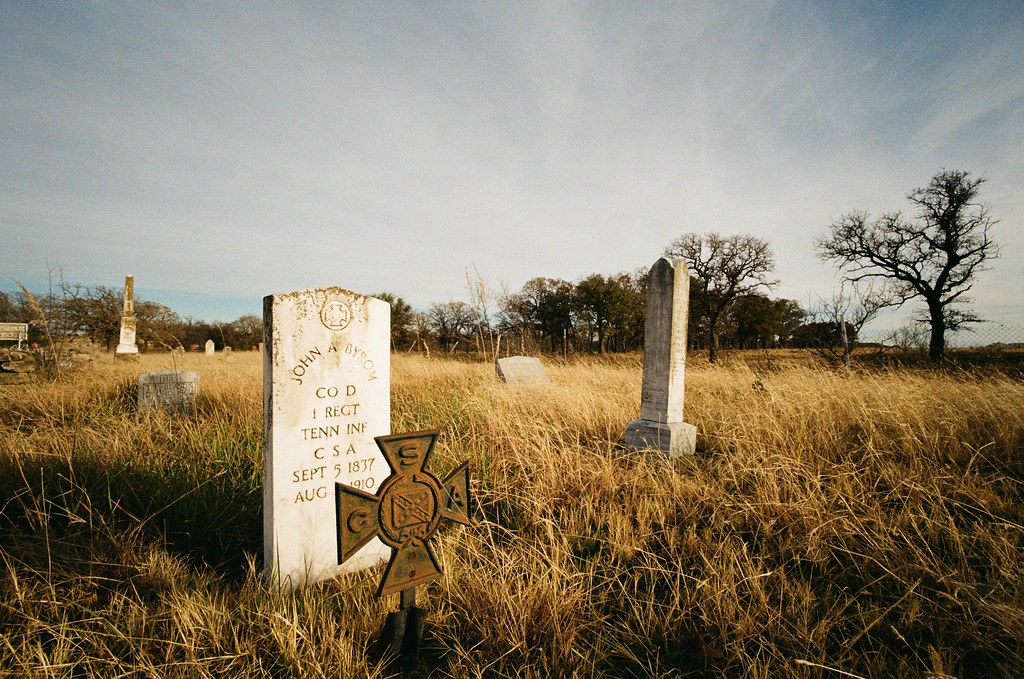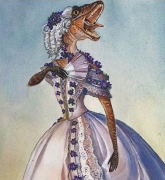|
OwlFancier posted:What they didn't tell the Germans is that the artillery section has percussionists. First chair, 75mm bass flautist
|
|
|
|

|
| # ? May 10, 2024 02:48 |
|
https://www.youtube.com/watch?v=dihJ1w48Jh0&t=323s Start at 5:23
|
|
|
|
Don't even get me started on the Loudness War.
|
|
|
|
i was in a production of the 1812 overture once, i played the cannon
|
|
|
|
https://www.youtube.com/watch?v=ZQVehnkc68M Personally I like it better honestly. OwlFancier fucked around with this message at 23:45 on Dec 3, 2017 |
|
|
|
KV-13 Queue: Bazooka, Super Bazooka, Matilda, 76 mm gun mod of the Matilda, Renault FT, Somua, SU-122, SU-122M, KV-13 to IS, T-60 factory #37, D.W. and VK 30.01(H), Wespe and other PzII SPGs, Pz38(t) in the USSR, Prospective French tanks, Medium Tank M7, Churchill II-IV, GAZ-71 and GAZ-72, Production and combat of the KV-1S, L-10 and L-30, Strv m/21, Landsverk prototypes 1943-1951, Pz.Sfl.V Sturer Emil, PzII Ausf. G-H, Marder III, Pershing trials in the USSR, Tiger study in the USSR, PIAT, SU-76, Heavy tanks M6, M6A1, and T1E1, SAu 40 and other medium SPGs, IS-2 (Object 234) and other Soviet heavy howitzer tanks, T-70B, SU-152, T-26 improved track projects, Object 238 and other improvements on the KV-1S, Lee and Grant tanks in British service, Matilda in the USSR, T26E4 Super Pershing, GMC M12, PzII Ausf. J, VK 30.01(P)/Typ 100/Leopard, VK 36.01(H), Luchs, Leopard, and other recon tanks, PzIII Ausf. G trials in the USSR, SU-203, 105 mm howitzer M2A1 Available for request:  IM-1 squeezebore cannon 45 mm M-6 gun Schmeisser's work in the USSR Object 237 (IS-1 prototype)  25-pounder Cruiser Tank Mk.I Valentine III and V  37 mm Anti-Tank Gun M3 Gun Motor Carriage M8 36 inch Little David mortar Medium Tank M3 use in the USSR NEW 15 cm sIG 33 10.5 cm leFH 18 7.5 cm LG 40 10.5 cm LG 42 Tiger (P) Stahlhelm in WWI Stahlhelm in WWII Pz.Sfl.IVc  47 mm wz.25 infantry gun 7TP and Vickers Mk.E trials in the USSR NEW
|
|
|
|
sullat posted:Trin posted an amusing story of the British band challenging the German band to a music-off and when the German band showed up, they hit it with artillery. Well that's hardly fair.
|
|
|
|
GreyjoyBastard posted:Well that's hardly fair. I think you will find that all is fair in love and war.
|
|
|
|
GreyjoyBastard posted:Well that's hardly fair. given it's the brits we think of as finding things "unsporting", i was just as suprised
|
|
|
|
Mycroft Holmes posted:given it's the brits we think of as finding things "unsporting", i was just as suprised unsporting when it gets done TO them. this happened to the hun so it was all good chuff.
|
|
|
|
This here's the story that I remember that fits that description it played out through the course of a couple days. Not even a contest, just the British treating the Germans to a nice concert to entice them up close to the front lines where they can hit them with some artillery. The social dynamics of trench warfare is so interesting. Where the marching stops and both sides are reduced to setting up siege on eachother's lines, you have all these soldiers in long-term contact with the enemy, so of course the only natural human impulse was to communicate here and there, maybe work out an understanding, but of course somebody will always come along to remind them to kill eachother. I guess it also has to do with the fact that nobody expected the war to happen as it did? High command wasn't ready to combat outbreaks of peace and keep its soldiers' "fighting spirit" up. I imagine there's not weird pranks and understandings among the soldiers who guard the Korean DMZ.
|
|
|
|
Here are a couple of milhist-related photos from the Texan 'old pioneer' cemetery where most of the people on my mom's side of the family are buried. And as you might guess from 'Texan' and 'old pioneer', the milhist factor is the presence of Confederate grave markers.   According to my uncle, these rough-hewn stone mounds are characteristic of Appalachian graves... "people from Tennessee" But some are more ordinary.  The stone piles are eerie. They seem like they belong to a an older and more exotic culture than Tennessee hillbillies that could've just as easily been my great4 grandparents. I wonder though, did the CSA ever actually use iron cross motifs like the metal decorations in those photos? It wouldn't surprise me if those were just added later on by some enterprising racists in the second half of the 20th century, as the symbol has become a pretty universal shorthand for white nationalism in the US. Thanks. I'm going back to 2500 posts in the past now, to pick up where I left off. SMERSH Mouth fucked around with this message at 04:35 on Dec 4, 2017 |
|
|
|
SlothfulCobra posted:I guess it also has to do with the fact that nobody expected the war to happen as it did? High command wasn't ready to combat outbreaks of peace and keep its soldiers' "fighting spirit" up. I imagine there's not weird pranks and understandings among the soldiers who guard the Korean DMZ. Fraternization was a lot less common when it was the French and the Germans facing each other, for example. Even at the height of the mutinies extensive efforts were made by the soldiers themselves to ensure the Germans didn't find out what was going on. That's obviously not something coming down from command. When it was Germans and Brits, there was still cases where - even without prompting from above - the units were happy to take every opportunity to gently caress over the enemy. That was as common as solidarity across the lines, and in some cases units used to one and not the other would get moved to a new sector and get into trouble. "Live and let live" was probably the prevailing view. That gets colored as a sort of friendliness. But that's kind of a post-war interpretation that, part of a larger tendency of the British popular opinion to paint the war as a tragic mistake rather than the fault of anyone. Contemporary descriptions mostly just paint it as not borrowing trouble from a dangerous opponent. Not that the other soldiers were just the same as them, but that if a vicious dog is asleep, no point in waking it. So the lack of connection across the DMZ probably has less to do with specific actions by higher ups, and more to do with how the soldiers actually there perceive the behavior of their opposites. That's obviously colored by propaganda, indoctrination, and so forth on both sides, but the idea that friendliness or enmity is the natural state across static lines is oversold. Apathy is probably the better description for the default. Comrade Gorbash fucked around with this message at 05:04 on Dec 4, 2017 |
|
|
|
SlothfulCobra posted:This here's the story that I remember that fits that description it played out through the course of a couple days. Not even a contest, just the British treating the Germans to a nice concert to entice them up close to the front lines where they can hit them with some artillery. You do know that soldiers in front-line trenches in WWI were rotated, right?
|
|
|
|
I didn't even necessarily mean friendly, just that they're interacting socially with these people on the other side of No Man's Land, in the middle of war, which is supposed to be past the point where you're supposed to socialize. I suppose it's half a triumph of the human spirit, and the other half disturbing that they're getting into the habit of being able to shoot these other people that they're at the same time considering as fellow human beings.
|
|
|
|
SMERSH Mouth posted:Here are a couple of milhist-related photos from the Texan 'old pioneer' cemetery where most of the people on my mom's side of the family are buried. And as you might guess from 'Texan' and 'old pioneer', the milhist factor is the presence of Confederate grave markers. This is completely off the top of my head and could be absolutely dogshit but the stones might be some devolution of cairns, given the Scots-Irish lineage a lot of Appalachians folks seem to claim/have.
|
|
|
|
SlothfulCobra posted:I didn't even necessarily mean friendly, just that they're interacting socially with these people on the other side of No Man's Land, in the middle of war, which is supposed to be past the point where you're supposed to socialize. I suppose it's half a triumph of the human spirit, and the other half disturbing that they're getting into the habit of being able to shoot these other people that they're at the same time considering as fellow human beings. Not all soldiers are warriors and vice versa.
|
|
|
|
Teriyaki Hairpiece posted:You do know that soldiers in front-line trenches in WWI were rotated, right? They were, but often within the same regiment or division. A battalion would take the front line for a week and rotate out for two for example. That wills till give you the phenomenon where you have the same units in line opposite each other for an extended period of time. That's when localized understanding can happen.
|
|
|
|
SMERSH Mouth posted:
It’s a really common motif in military orders and medals that way predates the iron cross. Take a look at any random assortment of 19th century military medals and you’ll find variations. Croix de guerre (France) the distinguished service cross (U.K.), and the navy cross (us) to name three off the top of my head. That particular design is known as the “confederate cross of honor” and was designed by one of the various veterans associations in the late 1890s. If it has any direct connection to the iron cross it predates it becoming synonymous with white supremacy via the third Reich’s cooption of Prussian military traditions. There are a lot of symbols like that, things that we now associate with white supremacy and which are used by racists to signal their beliefs but which didn’t have those associations in their original context. The swastika and tote Knopf are two pretty obvious examples.
|
|
|
|
Fraternization across lines probably has a longer history pre-rise of the modern state, considering how easy it is to serve multiple masters, and the fluid level of loyalties. Like it would probably get clamped down in a siege, but in a melee you might try to avoid stabbing the dude you know, or if two foraging parties run into one another.
|
|
|
|
SlothfulCobra posted:I guess it also has to do with the fact that nobody expected the war to happen as it did? High command wasn't ready to combat outbreaks of peace and keep its soldiers' "fighting spirit" up. I imagine there's not weird pranks and understandings among the soldiers who guard the Korean DMZ. Probably not given that one time the North Koreans hacked a couple of US soldiers on the DMZ to death with an axe.
|
|
|
|
Phobophilia posted:Fraternization across lines probably has a longer history pre-rise of the modern state, considering how easy it is to serve multiple masters, and the fluid level of loyalties. Like it would probably get clamped down in a siege, but in a melee you might try to avoid stabbing the dude you know, or if two foraging parties run into one another. Not necessarily. Loyalties could shift, but medieval soldiers, even aristocrats who knew each other, were perfectly happy to hack each other down in the melee or in a forage skirmish. Fights between foragers got incredibly nasty, because you often had such small numbers on each side, you couldn't just flee and hope to outrun most of your buddies like in a big battle.
|
|
|
|
Tias posted:Ack, sorry, I thought the NMA had brown besses Niggas Mit Attitude?
|
|
|
|
Not Methodist Anglicans
|
|
|
|

|
|
|
|
I just realized I am a colossal nerd. I would def react the same way!
|
|
|
|
Cyrano4747 posted:It’s a really common motif in military orders and medals that way predates the iron cross. Take a look at any random assortment of 19th century military medals and you’ll find variations. Croix de guerre (France) the distinguished service cross (U.K.), and the navy cross (us) to name three off the top of my head. I’m guessing this is a typo (and a great one) and the Nazis didn’t actually award a “dead knob”.
|
|
|
|
I think there's a pill for that
|
|
|
|
yeah, should be totenkopf, ie the prussian death's head that was coopted by the SS.
|
|
|
|
O I 100% understood, I just thought it was a funny typo and wanted to point it out to anyone who missed it. Totally not at your expense. That made my morning just a little bit better ; it was great. Thanks!
|
|
|
|
If you think that's good, I was talking in TFR last night about the STANAG magazine standard for nato rifle mags - basically the magazine that the M16 family uses - and my phone autocorrected it to "stalag." My autocorrect has learned some unique behavior, to say the least.
|
|
|
|
I can tell I've been doing too much computational linguistics cause I really want to study the guts of your auto-correct based on what language you're writing in at the time. That or it's just that time in the semester where I wanna think about anything besides my lectures.
|
|
|
|
Cyrano4747 posted:If you think that's good, I was talking in TFR last night about the STANAG magazine standard for nato rifle mags - basically the magazine that the M16 family uses - and my phone autocorrected it to "stalag." The stalag magazines of course were issued weekly by Colonel Robert E. Hogan's men in an elaborate improvised underground printing press deep beneath Luft Stalag 13.
|
|
|
|
Xiahou Dun posted:That or it's just that time in the semester where I wanna think about anything besides my lectures. I've got to walk in and teach a bunch of first year students about the post-WW2 economic order in 40 minutes. This class in particular has really struggled to engage with any economic history at all, which means that the 20 minutes or so on Breton Woods is going to be a fun one. I shoe horned in the beginning of the cold war onto the end of this lecture on purpose because I know I can wake them up with nuclear weapons and some of the crazier aspects of the early years of containment.
|
|
|
Milo and POTUS posted:Niggas Mit Attitude? New Model Army outside the jokes for anyone curious.
|
|
|
|
|
Xiahou Dun posted:I’m guessing this is a typo (and a great one) and the Nazis didn’t actually award a “dead knob”. They are all dead knobs to me
|
|
|
|
Teriyaki Hairpiece posted:You do know that soldiers in front-line trenches in WWI were rotated, right? Higher commands liked to do things to "shake things up," to keep the troopers from becoming too complacent and lapsing into not hating the enemy. Trench raids were a common solution - send a few men over at night to lob grenades into the enemy trench and they're less likely to be open to a complacent fraternization the next day. It's for this reason that mortar teams were often disliked by riflemen. A command would order a mortar team into an otherwise quiet section of trench to fire off a few rounds at the enemy. The enemy would retaliate, often with artillery, but the mortar team would have already packed up and left, leaving the artillery to hit the hapless infantry stuck in the trench. There's a decent book on this called Trench Warfare 1914-18: The Live and Let Live System by Ashworth. I think he overstates the case a bit, but it's worth reading.
|
|
|
|
SKY BOXES: Air Transports in the Second World War 1. Ju 52 2. German Gliders 3. Fw 200 Condor 4. German Motor Gliders The Germans, as you all know by now, had problems expanding their transport supply, or fielding newer designs than the Ju 52. This caused them to use gliders as a stop gap, and this logically lead military leaders and designers to wonder if you could just motorize the gliders and cut out all the complications of towing. The Go 244 and the Me 323 were the result. Both the Go 242 glider and the Me 321's designers had already given some thought to powered versions, even as the aircraft were being developed. The main stumbling block was engines. The Third Reich kept tight control of engine production, allocating every modern aircraft engine to existing fighter and bomber types. The solution to this problem came from an unexpected quarter: France had its own native aircraft engine industry, and had produced small stockpiles of engines for fighting Germany. Those engines could now be used to motorize gliders: both motorized gliders used French engines to power themselves. With the invasion of the USSR generating one logistical nightmare after another, motor-gliders seemed a cheap and fast way to get more skytrucks. First, the little known Go 244.  Go 244 First flew: 1942 Empty Weight: 5,100 kg (11,244 lb) Max Takeoff Weight: 7,800 kg (17,196 lb) Max speed: 290 km/h (180 mph) Range: 600 km (373 mi) Production: 43 made as Go 244s, and 133 were converted from Go 242s. Based on it's configuration, you'd think the Go 244 was going to be excellent for the time. It's twin tail booms, high wings, and rear access ramp makes it look very modern (especially compared to the steampunk Ju 52 or the flying horse's head Me 323) - almost like a cloth and tube-frame C-119. It was let down by a simple failing: engines. You can see this problem in the Go 244's prototype engines. The first was powered by two BMW 132s - the same engine powering the Ju 52. The second was powered by French Gnome-Rhone 14m radials, the same engines that powered the production Hs 129 anti-tank aircraft. This engine made about 700-750 hp. The third prototype used a Soviet aircraft engine - a Shvetsov M-25 radial, a licensed copy of the Wright Cyclone, also making 750 hp. The French radial was the only one available in numbers, so it became the default engine. For Mysterious German Nomenclature reasons, the prototype run was the A series, and the B series was the production run. As a airplane, the Go 244's design was pretty simple and pretty neat. It had the 'modern' configuration that cargo aircraft have today high, shoulder mounted wings, tricycle gear, rear ramp for easy unloading. It retained fixed landing gear in the rear, and got partial retraction for the forward strut. It retained the glider's construction of a steel-tube fuselage and plywood wings, covered in doped fabric. What load it could haul is a bit mysterious. Many web sites that have basic facts often quote '23 paratroopers or cargo', but considering that's a bit bigger than the Ju 52, I'm slightly skeptical. If you do a very quick and dirty calculation - take the max takeoff weight, subtract the empty weight, then divide the results by 2, you get 1350 kg, which is less than the Ju 52's payload capability of 1500 -1700 kg, and closer to what I'd expect to a lighter aircraft with one less engine. Without a doubt it was easier to load and unload than the Ju 52. Another negative of its anemic engines was that the Go 244 couldn't stay airborne with an engine out. It was first delivered to units in March 1942, to German forces on Crete and in Greece. It was apparently also drawn into the desperate airlift to resupply the Afrika corps - but it was discovered the Go 244 was horribly vulnerable to fighters. This restricted the Go 244 to second line duty only; quite a feat when the aforementioned airlift saw BV 222s and impressed civilian Ju 90s being used. With that restriction, it seems the majority of Go 244s saw service on the Eastern Front - but it doesn't seem like it was judged very successful. Two transport formations converted to the type - but then went back to the good ol' Ju 52. Remaining Go 244s might have been sent to training squadrons to be multi-engine trainers. Production ended in 1943. Um, they made a specialized paratrooper version?    I name you...Boxy Fruvis   Me 323 Giant - bizarreness and practicality apex First flew: 1942 Empty Weight: 27,330 kg (60,260 lb) Max Takeoff Weight: 43,000 kg (94,815 lb) Max speed: 285 km/h (177 mph) Cruising speed: 218 km/h (136 mph) Range: 'D' normal 700 km, max 1100 km 'E' normal 1095 km Payload: 11,000 kg normal 22,000 kg overload using assisted takeoff via towplane/rockets The Nazi invasion of the USSR revealed many things, among them that Germany was going to need a hell of a lot more air transports. The quickest route to expand Germany's air hauling capability was judged to be to motorize the Me 321 glider. Engines were found in France, the Gnome-Rhône 14N 48/49, which made 1100 hp. [Not to be confused with the Go 244's engines; the N was a later, larger series.] A four engines prototype was made, but was judged to be underpowered when it was found it needed rocket assist or a tow on takeoff, when the entire idea was to ditch such fakakta arrangements. A six engine model was made, and this was judged to be good enough. The initial series of 100 was the D (once again, Mysterious German Nomenclature reasons). The Me 323 would be the largest landplane operated in World War 2. Like the glider, it had a 55.2 m (181 ft) wingspan, and a length of 28.2 m (92 ft) making it as long as the B-29, but with considerably bigger wings. It's wings were even wider than the giant BV 222 flying boat, though the BV 222 was longer. The Me 323 retained the clamshell nose / loading ramp the glider had. Also like the glider, when carrying troops, the cargo floor could be made multi-level, allowing cargo beneath the soldiers. As for loads, the Me 323 could haul smaller artillery pieces with their half-track prime mover, an 88mm gun, two four ton trucks, 8700 loaves of bread (the loaves on the bottom must get squished terribly) 52 fuel drums, 130 men, or 60 stretchers. The regular cargo weight limit was 11 tons - but according to **German Wikipedia** if take off assist rockets were used, or the He 111Z was used, it could be overloaded to 22 tons. The crew to fly the Me 323 was five: two pilots, a radio operator, and two flight engineers at stations in the wings.. Defenses were provided by mounted MG 131s in the fuselage and in twin turrets on the wings. Early models used twin-blade wooden propellers, while all later models used three-blade props with variable pitch. The cost for this utility was paid for partially by dynamics: the plane was a pig to fly. Most aircraft are optimized to fly at a certain height, but the glider ancestor, which was designed to fly best near the ground dictated the Me 323 fly very low and very slow. It's cruising speed was 219 km/h (136 mph), which isn't a blazing speed for a car, let alone an airplane. It's range was on a level with the Ju 52. Like the Vickers Wellington, it had a certain durability in the face of air attacks, as bullets could punch holes in the Me 323's fabric without doing much harm. The cockpit was, wisely, heavily armored. The other side of the coin was that with the Me 323's speed, fighters would have many opportunities to attack it. Me 323 in Allied gun sights  The Me 323 was a bizarre Frankenstein creation, a grafted together monster that only existed thanks to the equally weird glider version, but one that potentially had a lot of utility for the Germans. Unfortunately for them, the Me 323 was just in time to participate in first the desperate airlift to keep the Afrika Corps resupplied, and later the related evacuation. A special unit was formed: KG zbV (for special use) 323, to fly the flying cargo nose to North Africa. Me 323s were good cargo haulers, but it wasn't long before Allied Air crews were reading freshly printed pamphlets on how to shoot down the hapless, lumbering Giants. RAF Beaufighters and B-26s pressed into the fighter role made long range interceptions of Me 323s, slowly wearing down the airlift. On April 22nd, 1943, 17 Me 323s were being escorted across the Sicilian strait, when the formation was jumped by RAF Spitfires and USAAF Warhawks. Only six Me 323s escaped, as in addition to everything else bad about this, the Me 323s happened to be hauling oil and fuel that day, robbing them of their usual toughness. KG 323 took heavy casualties in North Africa - losing 65 aircraft, with another 25 damaged.   Events like this caused the first of two variants to come into existence. Nicknamed the Rhino, there was an attempt to make a Me 323 gunship, heavily armed and armored, to provide some protection to Giants while in flight. More a Q-ship than gunship, the effort saw two prototypes were made, but regular escorts were judged more effective.   At the capitulation of the Axis forces in Africa, most Me 323s were sent to the eastern front to bolster transport formations there. It seems KG 323 was disbanded, with the Me 323 serving in Transportstaffel 5. Transportstaffel 5 is a interesting formation; it started out as Four-Engine Transport Squadron, which flew whatever four engine aircraft it could get its mitts on. These included civilian Fw 200s, Ju 90s, and hilariously, they might also have been using the Piaggio P.108, the Italian heavy bomber, as a transport. This formation was briefly named Transport 290 as it was hoped it would make up a squadron of Ju 290s in the transport role (four wings of 12 aircraft.) This hope was dashed when Ju 290s went to sea, and the formation was renamed again. Maybe the Me 323s were a replacement. The numbers were replenished with the Me 323 E, an improved version with a slightly greater lift capacity. Production was also contracted out to Zeppelin, and they may have tweaked the design a bit to get the normal payload to around 15 tons. These served on the Eastern Front for the rest of the war. Despite the ad-hoc nature of the Me 323, nearly 200 were made, with plans for a third series run made with Jumo 211 V12s. This fell by the wayside when events began overtaking Luftwaffe plans at the start of 1944. Production ended April 30th, 1944. Video - shows off the interior, post-modern electronic scoring is a bonus: https://www.youtube.com/watch?v=1OvyOeXnW0k There are a lot of photos of the Me 323 loading and unloading.      Despite the fairings, the wheels didn't retract.  A stripped Me 323, 1945.  Cockpit.  Post War Use: none, as far as I can tell, for either. Nebakenezzer fucked around with this message at 20:42 on Dec 4, 2017 |
|
|
|
The Me 323 looks just like one of the giant transports out of Miyazaki's Nausicaä of the Valley of Wind, which is a bonus.
Comrade Gorbash fucked around with this message at 21:23 on Dec 4, 2017 |
|
|
|

|
| # ? May 10, 2024 02:48 |
|
Is the 323 basically a pretty decent design all things considered? I mean you should apparently keep it out of dogfights but that's not an unusual characteristic in a cargo plane.
|
|
|





































